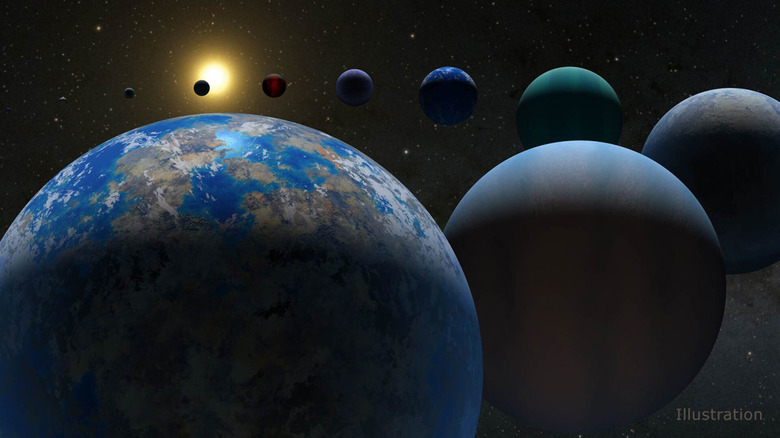NASA Confirms There Are Now Over 5,000 Known Exoplanets
Just a few decades ago, the only planets we were sure that existed were those orbiting our sun, making up our solar system. Astronomers thought it was very likely that there were also planets orbiting other stars, but these were almost impossible to detect because they were so small, relatively speaking, and so far away. But since the first planet outside our solar system (or exoplanet) was discovered in 1992, the number of known exoplanets has exploded into an exciting and active field of research.
Now, NASA has announced we have reached a remarkable milestone, with over 5,000 confirmed exoplanets discovered to date.
"It's not just a number," said Jessie Christiansen, science lead for the archive and a research scientist with the NASA Exoplanet Science Institute at Caltech in Pasadena. "Each one of them is a new world, a brand-new planet. I get excited about every one because we don't know anything about them."
The count of confirmed exoplanets passed the 5,000 mark on Monday March 21, when 65 new planets were added to NASA's Exoplanet Archive, which collates exoplanet findings that have been confirmed in peer-reviewed scientific journals.
These 5,000 exoplanets come in many sizes. Those that are Earth-sized and rocky are called terrestrials, and make up around 4% of known exoplanets, while super-Earths are slightly bigger than our planet but smaller than Neptune, and make up 31% of exoplanets. Neptune-like planets – which are often ice giants – make up 35% of exoplanets, and then finally there are gas giants, similar to Saturn or Jupiter, which make up the final 30% of exoplanets.
Is there life out there?
However, these percentages don't necessarily represent how common each type of planet is in the galaxy. There might be many more Earth-like worlds out there, for example, but because these are smaller than other types of exoplanet they are harder to spot using current methods.
Looking at the variety of planets we've discovered so far, it's impossible not to speculate on whether some of them could potentially host life, or if there's another system out there similar to our solar system. Many experts agree that there may well be planets out there which are capable of supporting life. "To my thinking, it is inevitable that we'll find some kind of life somewhere – most likely of some primitive kind," Alexander Wolszczan, lead author of the paper which shared the first finding of an exoplanet 30 years ago, said (via NASA).
With new exoplanets being discovered all the time, the potential of finding one which could support life is always increasing. And as we discover new planets, we learn more about the many different types of system that exist, thanks to ground-breaking missions like NASA's now-retired Kepler Space Telescope which identified thousands of exoplanets.
"I get a real feeling of satisfaction, and really of awe at what's out there," said astronomer William Borucki, who was the principal investigator of the Kepler mission. "None of us expected this enormous variety of planetary systems and stars. It's just amazing."
